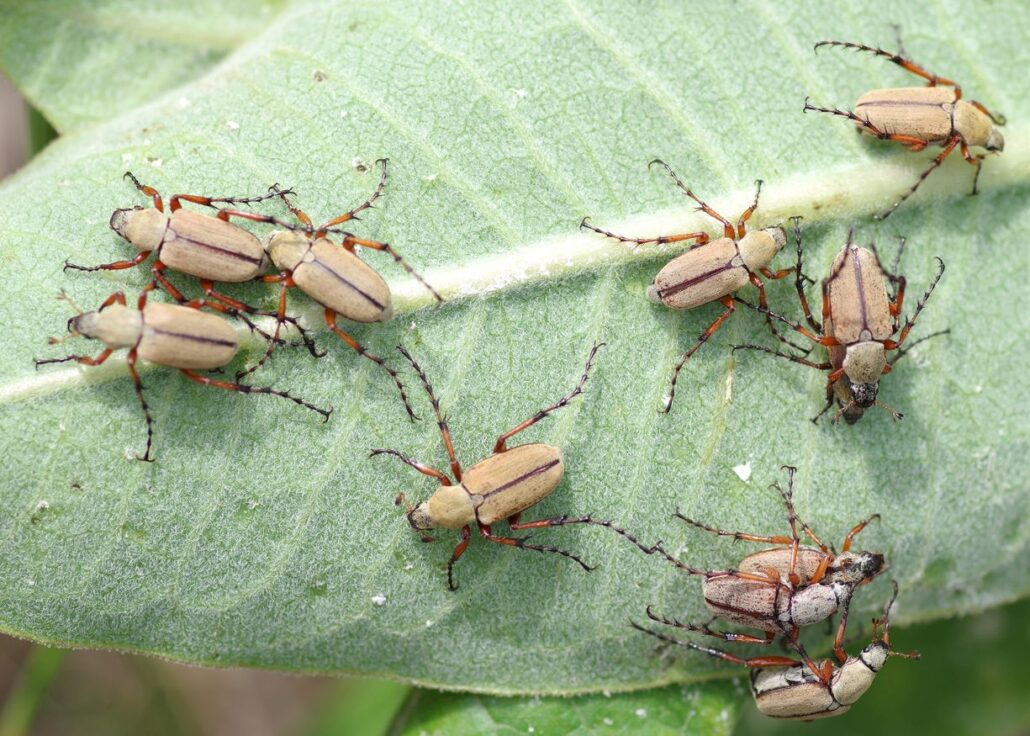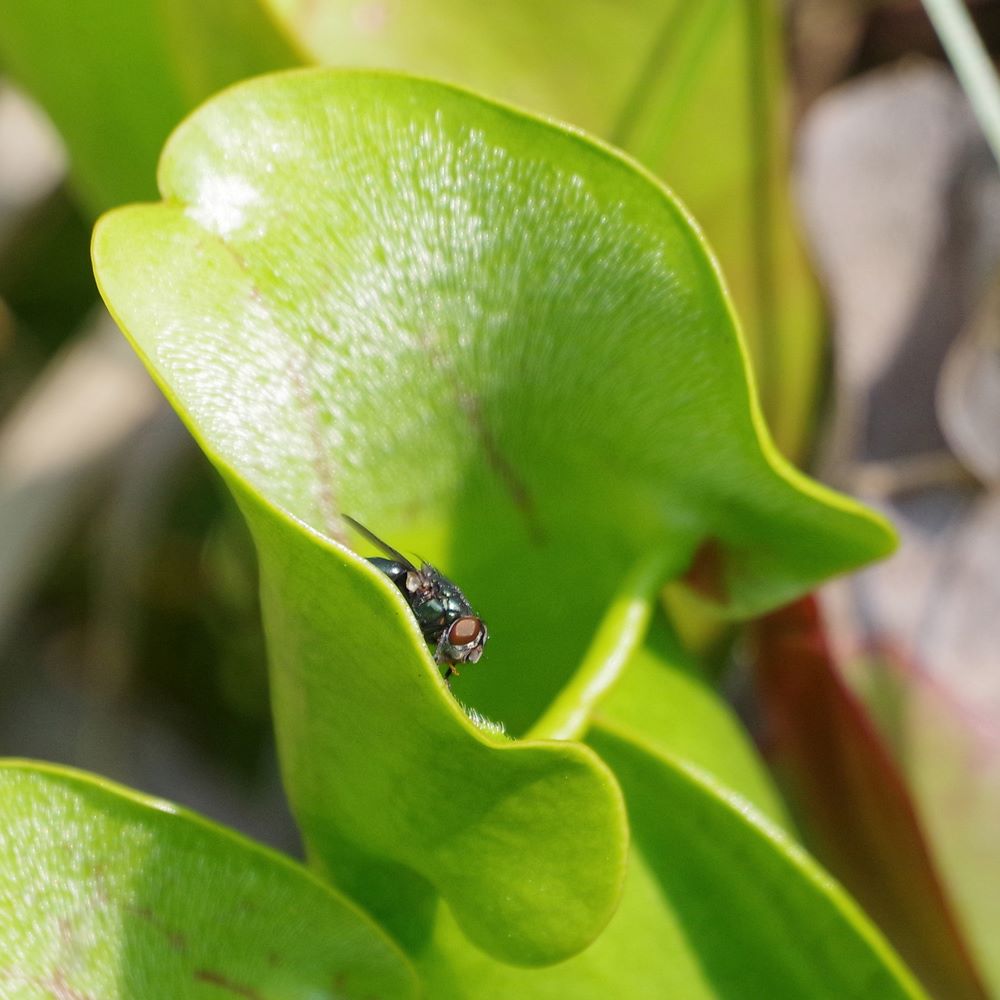by Kate Redmond
Bug o’the Week Midsummer Memories
Howdy, BugFans,
Last year the BugLady had so many midsummer stories to tell that she wrote one episode about dragonflies, and a second about “other” (because as seasoned BugFans know (well) her camera gravitates to dragons and damsels). She’s got a heap of pictures to share again this year, but she’ll mix and match the groups in a two-part summer feature.

ROSE CHAFER BEETLE – The BugLady saw a single Rose Chafer last year and wrote about it https://uwm.edu/field-station/rose-chafer-beetle/. This year, she found bunches of them – orgies of them (she’s not sure what the collective noun for Rose Chafers is, but she’s pretty sure it’s “orgy”). And she was enthralled by the leggy designs they made on the undersides of milkweed leaves.


COPPER BUTTERFLY – A highlight of the BugLady’s recent explorations of Kohler-Andrae State Park was finding two species of Copper butterflies – American Copper and Bronze Copper (she rarely finds Coppers). The Coppers are in the Gossamer-wing butterfly family Lycaenidae, along with the Harvesters, Hairstreaks, Elfins, and Blues. Their caterpillars feed on plants in the rose and buckwheat families (dock, sorrel, and knotweed).

VIOLET/VARIABLE DANCER – The BugLady was talking to a friend recently about the colors that dragonflies and damselflies come in. Black, black and yellow, green, blue – even red. But purple?

FLY ON PITCHER PLANT – This is just the way it’s supposed to work. Insects with a “sweet tooth” get lured to the lip of the pitcher plant and partake of the (slightly narcotic) nectar there. Judgment impaired, they mosey around a little, maybe venturing onto the zone of down-pointing teeth below the lip, and then onto the slick, waxy zone below that. It’s all downhill from there.
GOLDENROD CRAB SPIDER on yarrow (not all Goldenrod crab spiders have red racing stripes). Incoming insects have trouble seeing her, too. Out of all the species of crab spiders in the world (about 3,000), only a very few have the ability to change colors, and that ability is limited to the female of the species. Her color palette includes white, yellow, and pale green. She sees the background color with her eyes, and because a wardrobe change takes her between three days and three weeks she tends to stay on her chosen flower. Her base color is white, and switching involves either creating yellow pigment or reabsorbing and then sequestering or excreting it.


Why? Good question. Scientists have tested spiders on matching and non-matching flowers (which they often sit on), and they saw no boost in hunting success when the spiders matched their background (she likes prey that’s bigger than she is, like bumblebees, because she has eggs to make. She loses weight on a diet of small flies). When spiders themselves are the prey, they are not picked off more often on non-matching flowers. Maybe the color change gives her some sort of advantage when she forms her egg case, or maybe it’s a vestigial solution to a long-ago problem.

ORANGE-LEGGED DRONE FLY – This Syrphid/Flower/Hover fly is so serious about its bumble bee disguise that it makes a loud buzz when it’s flying



SEDGE SPRITE TUSSLE – the BugLady was in a bog not long ago when she saw two damselflies tussling on some leaves. At first, she thought there was some predation going on, but that didn’t make sense because they were both Sedge Sprites. He had grabbed her and was wrestling with her, and she was having none of it. He suddenly flipped her around and clasped the back of her head with the tip of his abdomen (SOP for mating dragonflies and damselflies). Rather than reaching forward and taking his sperm packet, she ultimately gave a couple of good shakes and dislodged him. One small drama.

PHANTOM CRANE FLY – Flies come in all sizes and shapes, but this magical creature in white spats is the BugLady’s favorite. It lives in dappled, brushy wetland edges where it flickers through the vegetation like a tiny wraith.

FORKTAIL AND POWDERED DANCER – Eastern Forktails are voracious hunters that go after other damselflies, even those close to their size. The mature female forktail (in blue) found a teneral (young) Powdered Dancer (in tan) that was probably not a strong flyer yet.
Go outside – look at bugs,
Kate Redmond, The BugLady
Bug of the Week archives:
http://uwm.edu/field-station/category/bug-of-the-week/
